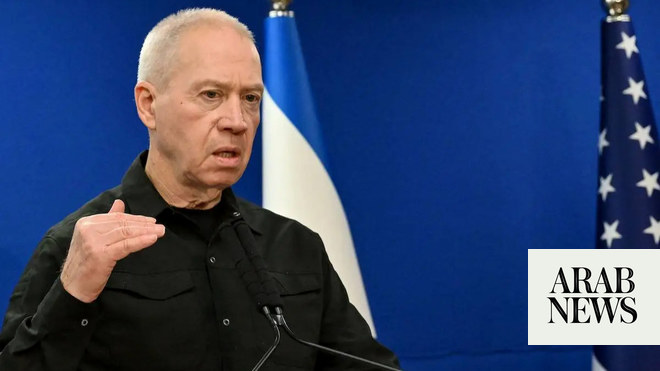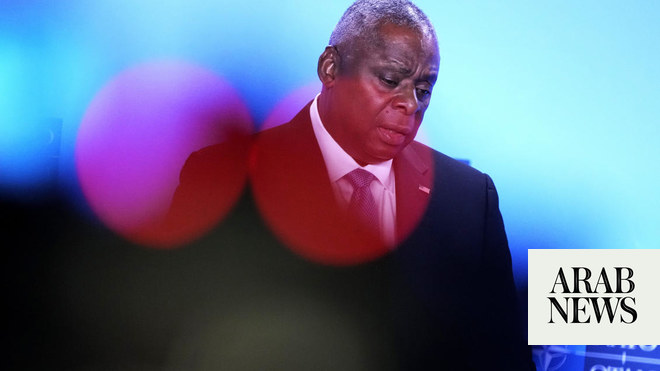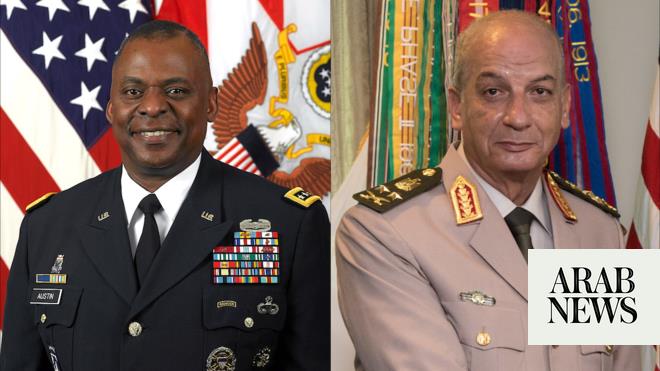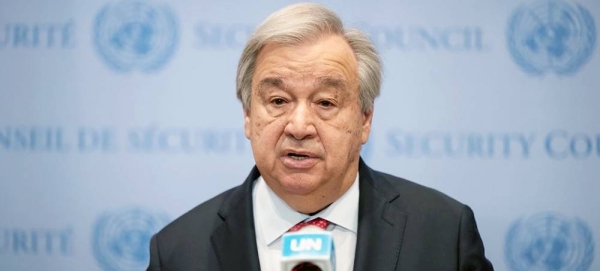
The decision by Chinese Defense Minister Dong Jun “is a setback for the whole region,” Austin said after the first day of meetings
“It affects the region because the region really wants to see us, two significant players in the region, two significant powers, talk to each other, and that reassures the entire region”
VIENTIANE, Laos: US Secretary of Defense Lloyd Austin expressed regret Wednesday that his Chinese counterpart chose not to hold talks with him during meetings of Southeast Asian defense chiefs in Laos, calling it a setback for the entire region.
The Association of Southeast Asian Nations is holding security talks in Vientiane at a time of increasing maritime disputes with China and as the transition to a new US president approaches.
The decision by Chinese Defense Minister Dong Jun “is a setback for the whole region,” Austin said after the first day of meetings.
“It’s unfortunate. It affects the region because the region really wants to see us, two significant players in the region, two significant powers, talk to each other, and that reassures the entire region,” he said.
There was no immediate comment from China on its decision not to meet with Austin.
Austin just wrapped up meetings in Australia with officials there and with Japan’s defense minister. They pledged to support ASEAN and expressed their “serious concern about destabilizing actions in the East and South China Seas, including dangerous conduct by the People’s Republic of China against Philippines and other coastal state vessels.”
In addition to the United States and China, other nations attending the two-day ASEAN meetings from outside Southeast Asia include Japan, South Korea, India and Australia.
Along with the Philippines, ASEAN members Vietnam, Malaysia and Brunei have competing claims with China in the South China Sea, which Beijing claims almost entirely as its own territory.
Indonesia, Thailand, Singapore, Myanmar, Cambodia and Laos are the other ASEAN members.
Opening the talks, Laotian Defense Minister Chansamone Chanyalath said he hoped for productive meetings that would “become a standard for us to continue ASEAN’s cooperation in defense, including how to handle, thwart, and manage security challenges in the present and in the future.”
As China has grown more assertive in pushing its territorial claims in recent years, ASEAN members and Beijing have been negotiating a code of conduct to govern behavior in the sea, but progress has been slow.
Officials have agreed to try to complete the code by 2026, but talks have been hampered by thorny issues, including disagreements over whether the pact should be binding.
Philippine President Ferdinand Marcos Jr., who has called for more urgency in the code of conduct negotiations, complained at a meeting of ASEAN leaders last month that his country “continues to be subject to harassment and intimidation” by China’s actions, which he said violated international law.
Chinese and Philippine vessels have clashed repeatedly this year, and Vietnam in October charged that Chinese forces assaulted its fishermen in disputed areas in the South China Sea. China has also sent patrol vessels to areas that Indonesia and Malaysia claim as their exclusive economic zones.
At the meeting of ASEAN leaders last month, US Secretary of State Antony Blinken said Washington was “very concerned about China’s increasingly dangerous and unlawful activities in the South China Sea which have injured people, harm vessels from ASEAN nations and contradict commitments to peaceful resolutions of disputes.”
He pledged that the US would “continue to support freedom of navigation, and freedom of overflight in the Indo Pacific.”
In response, Chinese Foreign Ministry spokesperson Mao Ning said US and other non-regional militaries present in the sea were the main source of instability.
“The increasing military deployment and activities in the South China Sea by the US and a few other non-regional countries, stoking confrontation and creating tensions, are the greatest source of instability for peace and stability in the South China Sea,” Mao said.
It is not clear how the incoming administration of US President-elect Donald Trump will address the South China Sea situation.
After Austin’s meetings in Australia, the Defense Department said the US, Australia and Japan had agreed to expand joint drills and announced a defense consultation body among the three countries’ forces to strengthen their cooperation.
When asked Tuesday while in the Philippines about whether the strong US defense support would continue for the country under Trump, Austin said he would not speculate.
Although Austin failed to hold talks with Chinese Defense Minister Dong, Japanese Defense Minister Gen Nakatani was expected to meet with Dong and express concerns about Beijing’s military activities, Japan’s NHK public television reported.
Japan has protested that a Chinese military aircraft violated its airspace briefly in August, and in September expressed “serious concerns” after a Chinese aircraft carrier and two destroyers sailed between two Japanese islands.
The meetings are also likely to touch on tensions in the Korean Peninsula, the Russia-Ukraine war, and wars in the Middle East. They are also expected to discuss other issues, including natural disasters, cybersecurity and terrorism.
Another thorny regional issue is the civil war and humanitarian crisis in ASEAN member Myanmar. The group’s credibility has been severely tested by the war in Myanmar, where the army ousted an elected government in 2021, and fighting has continued with pro-democracy guerillas and ethnic rebels.
More than a year into an offensive initiated by three militias and joined by other resistance groups, observers estimate the military controls less than half the country.
Myanmar military rulers have been barred from ASEAN meetings since late 2021, but this year the country has been represented by high-level bureaucrats, including at the summit in October.












